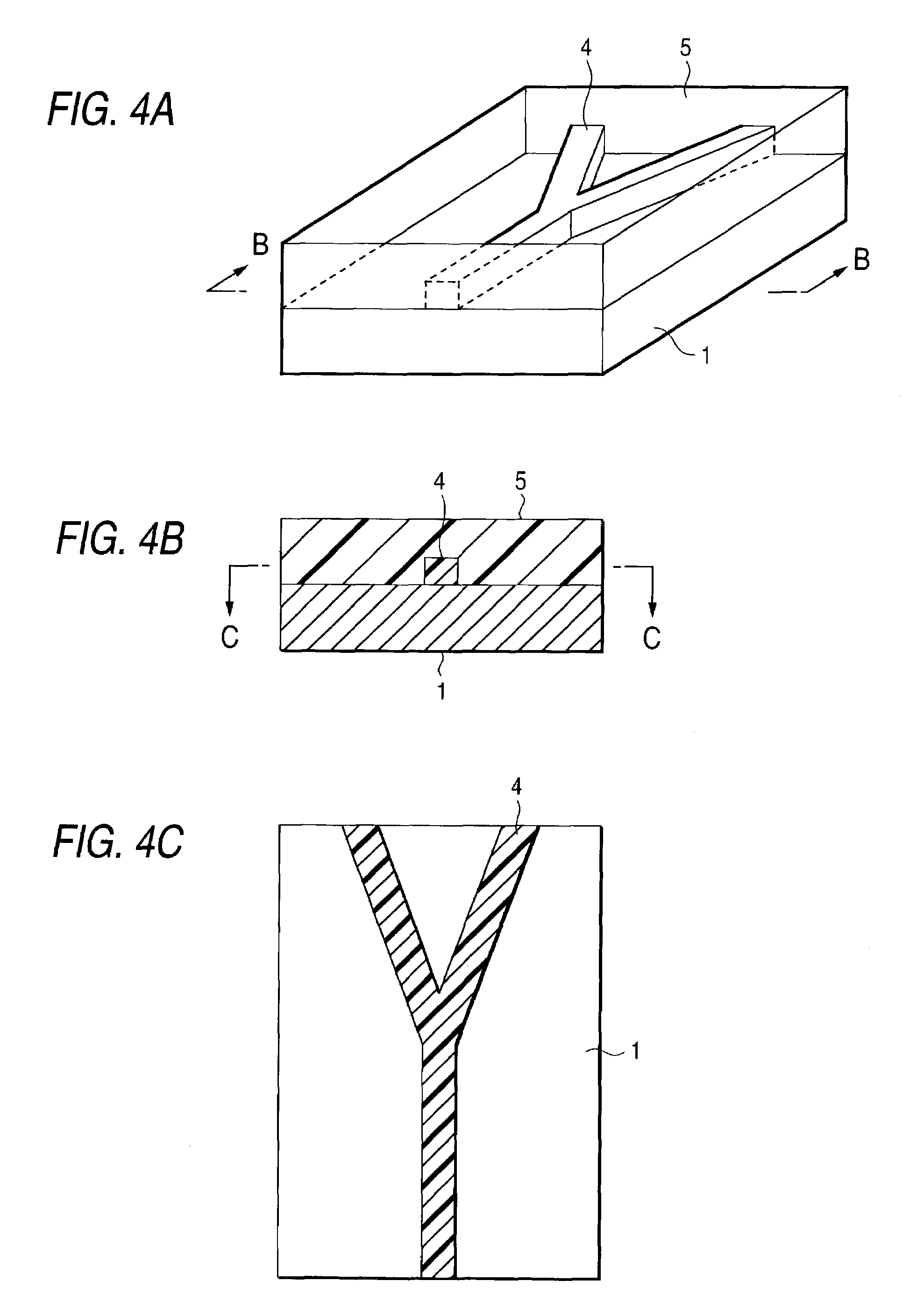Photosensitive polyimide resin precursor composition, optical polyimide obtained from the composition, optical waveguide using the polyimide, and process for producing the optical waveguide
a technology of photosensitive polyimide resin and precursor composition, which is applied in the direction of photosensitive materials, instruments, photomechanical apparatuses, etc., can solve the problems of not solving the problem of realizing a reduction of production cost, affecting the effect of sensitivity, and reducing the decomposition of photosensitive compounds
- Summary
- Abstract
- Description
- Claims
- Application Information
AI Technical Summary
Benefits of technology
Problems solved by technology
Method used
Image
Examples
example 1
[0101]In a 500 ml separable flask, 16.7 g (0.05 moles) of 2,2-bis(4-aminophenyl) hexafluoropropane (BAAF) was dissolved in 155.6 g of N,N-dimethylacetamide (DMAc) in a nitrogen atmosphere. 22.2 g (0.05 moles) of 2,2-bis(3,4-dicarboxyphenyl)hexafluoropropane dianhydride was added to this solution with stirring, and the resulting mixture was additionally stirred at room temperature for 24 hours to prepare a polyamic acid solution.
[0102]0.019 g (0.05 parts by weight per 100 parts by weight of the polyamic acid (solids content) of the polyamic acid solution) of EDHP (photosensitive compound) and 5.8 g (15 parts by weight per 100 parts by weight of the polyamic acid of the polyamic acid solution) of polyethylene glycol dimethyl ether having a weight average molecular weight of 500 were added to this polyamic acid solution to obtain a photosensitive polyimide resin precursor composition as a solution.
[0103]The solution of the photosensitive polyimide resin precursor composition was applie...
example 2
[0106]A channel type optical waveguide was obtained in the same manner as in Example 1, except that 2 parts by weight of the photosensitive compound (EDHP) per 100 parts by weight of the polyamic acid (solids content) was used. This optical waveguide was measured for light propagation loss in the same manner as in Example 1. As a result, the optical waveguide had a light propagation loss of 1.4 dB / cm.
example 3
[0107]A channel type optical waveguide was obtained in the same manner as in Example 1, except that 4 parts by weight per 100 parts by weight of the polyamic acid (solids content) of the photosensitive compound (EDHP) was used. This optical waveguide was measured for light propagation loss in the same manner as in Example 1. As a result, the optical waveguide had a light propagation loss of 1.6 dB / cm.
PUM
| Property | Measurement | Unit |
|---|---|---|
| aspect ratio | aaaaa | aaaaa |
| temperature | aaaaa | aaaaa |
| temperature | aaaaa | aaaaa |
Abstract
Description
Claims
Application Information
 Login to View More
Login to View More - R&D
- Intellectual Property
- Life Sciences
- Materials
- Tech Scout
- Unparalleled Data Quality
- Higher Quality Content
- 60% Fewer Hallucinations
Browse by: Latest US Patents, China's latest patents, Technical Efficacy Thesaurus, Application Domain, Technology Topic, Popular Technical Reports.
© 2025 PatSnap. All rights reserved.Legal|Privacy policy|Modern Slavery Act Transparency Statement|Sitemap|About US| Contact US: help@patsnap.com



